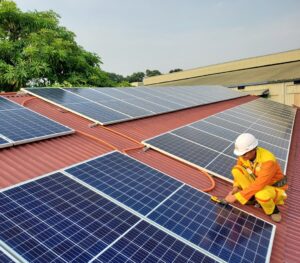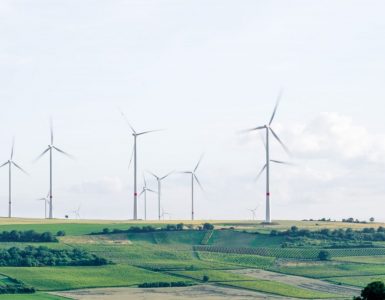India and Australia have entered into a partnership to advance cooperation in renewable energy and clean energy supply chains and reinforce their energy security.
The Renewable Energy Partnership would provide the framework for cooperation in priority areas such as solar PV, green hydrogen, energy storage, two-way investment in renewable energy projects and allied areas; and upgraded skills training for the renewables workforce of the future.
Both countries recognise that climate change is one of the defining challenges of this century and this partnership underscores their commitment to mitigate its impacts and contribute to international efforts to achieve the Paris Agreement and accelerate global decarbonisation efforts.
Australia and India have close bilateral, regional and multilateral cooperation across a range of important sectors – including climate change and renewable energy, trade and investment, defence and security, education and research, skills, mobility, science and technology, regional and multilateral cooperation, community and cultural links, and people-to-people ties.
In December 2022, the countries signed the Australia-India Economic Cooperation and Trade Agreement (ECTA) to enable two-way trade, business engagements and market access for goods and services.
The Renewable Energy Partnership is reflective of the Comprehensive Strategic Partnership to realise synergies between the economies of both countries and promote mutually beneficial investments in both directions.
The partnership intends to accelerate the energy transition to effectively contribute to their obligations under the Paris Agreement. The areas of cooperation and discussion will include –
- Solar PV, informed by the recommendations of the India-Australia Solar Taskforce with cooperation projects including rooftop solar workforce development, commercialisation of cutting-edge solar PV technology, and two-way investment
- Solar supply chains
- Green hydrogen, with cooperation activities to be informed by the India-Australia Green Hydrogen Taskforce
- Energy storage
- Circular economy for renewable energy
- Two-way investment in Renewable Energy Projects and allied areas.
- Capacity building
The Partnership will leverage the strengths of the bilateral relationship by addressing cross-cutting themes of mutual benefit:
- Building the future renewable workforce, including through skills and training;
- Establishing leadership in the commercialisation of cutting-edge renewable technology
- Building two-way investment by removing barriers to giga-scale joint ventures
The leaders of India-Australia expressed their intention to maintain a regular dialogue on key technical issues including developments at both the national and global level. To achieve this the countries will utilise existing bilateral architecture, particularly the Comprehensive Strategic Partnership.
The Partnership will also establish an Australia-India 1.5 Track Dialogue to better connect Australian and Indian research, investment and industry opportunities in renewable energy.
i. Representatives from the private sector and research institutions in the fields of energy and resources will be invited to participate in the 1.5 Track Dialogue with government officials of the Partners and relevant government organisations.
ii. The 1.5 Track Dialogue will explore and define opportunities for collaboration within the areas of potential cooperation.
iii. The Participants of the 1.5 Track Dialogue will cooperate closely with relevant government ministries/departments, agencies and authorities to deliver the intent of the Partnership.
iv. The 1.5 Track Dialogue will report to the Ministers via the New and Renewable Energy Joint Working Group.
The efficient governance of the partnership will be facilitated by Australia’s Department of Climate Change, Energy, the Environment and Water (DCCEEW) and India’s Ministry for New and Renewable Energy (MNRE).
Governance arrangements will ensure the inclusion of relevant Government departments, agencies, and authorities in the activities carried out by the Partnership.
The projects for cooperation under the India-Australia Renewable Energy Partnership can include –

Rooftop Solar Workforce Development
In February 2024, India launched PM Surya Ghar Muft Bijli Yojana to deploy 10 million solar rooftops in India. This presents an opportunity for collaboration with Australia which has the world’s largest per capita deployment of rooftop solar.
The cooperation between the countries may peruse the findings of the India-Australia Solar Taskforce, particularly the need to build future solar workforces and may explore establishing a Rooftop Solar Training Academy in India to train 2000 women and young people as solar technicians from 2025 to 27.
They may also seek to establish a global best practice curriculum and course materials designed to meet Australian and international occupational standards that ensure trainees form a talent pool for roles worldwide.
India may explore inviting selected Australian firms with leading digital enabling technology and energy storage solutions to pilot and demonstration projects in the country.
The countries may explore beginning a renewable energy leadership training program for Indian energy sector policymakers, regulators, and distribution company executives including a visit program to Australia to build networks between senior executives in the two countries.
Commercialisation of cutting-edge solar PV technology
Building on the success of the first round of the RISE Accelerator under the India-Australia Technology and Innovation Challenge led by the Atal Innovation Mission and the CSIRO, the partnership may establish a second phase of the Challenge to target identified industry R&D priorities in solar PV manufacturing.
The countries may agree on measurable performance indicators for Australia-India collaboration achieving global leadership in the commercialisation of cutting-edge solar PV technology by 2032.
Ramping up Two-way Investment in Renewables
The partnership may also explore the complementarities between Make in India and Future Made in Australia and encourage, through the offices of the High Commissioners of Australia and India, two-way investment into net-zero aligned industries in both countries including solar PV manufacturing (particularly polysilicon); battery mineral processing (particularly lithium hydroxide), and green iron for green steel.
Green Hydrogen Cooperation
Green Hydrogen cooperation activities may be informed by the recommendations of the India-Australia Green Hydrogen Taskforce.






Add comment